Somatic, Spiritual, and Systemic Resilience
The only things that are truly resilient are interconnected.
Hello and welcome!
If you’re new here, I’m so glad you’ve found your way to The Living World. Over the past week, my subscriber count here has nearly doubled—largely thanks to my recent essay on villaging resonating way more than I ever expected it to when I wrote it in a pre-dawn creative flow with my baby sleeping on me a week ago. The same goes for my husband and partner in all things, whose essay on fascia really took off last week as well, it’s been really cool connecting with so many really thoughtful resonant people, and we’re eager to connect more.
These two essays may seem unrelated at first glance, but to us, they’ve always been part of the same conversation:
Fascia is the interstitial tissue of our bodies.
The kind of connection and cooperation I’m talking about when I write about villaging is the interstitial fabric of human culture.
Both are foundational, connective, and absolutely essential. Right now, they’re more important than ever.
Through the lens of living systems, we can see how everything is woven together—our bodies, our relationships, our communities, and the regenerative future we’re all shaping.
We hope this piece helps illuminate those connections. It’s a long one, but full of things we love and believe can deeply support you. Because if we’re going to build a world where life thrives, we need to think—and live—like the living systems that we are.
Ready? Let’s grow.
We are living through a time of collapse and regeneration.
I’m not going to list it all because I assume you’re aware that ecological, economic, and social systems are failing. Crises converge. Every day, we are asked to hold more—more uncertainty, more complexity, more loss. And yet, within this unraveling, something else is happening.
Remembrance. Reconnection. Regeneration.
Resilience is not about bracing against collapse. It’s about adapting, creating, and living in a way that makes something new possible. Resilience is not just about surviving—it is about shaping the world that comes next.
True resilience emerges when we align human systems—our bodies, our communities, our economies, our ways of living—with the intelligence of life itself.
And life is not linear. It moves in cycles of expansion and stabilization. It regenerates. It transforms.
Over the years, Seth and I have both studied how systems—biological, cultural, economic—break down and regenerate. We’ve experienced firsthand how resilience requires not just personal fortitude, but systemic awareness and spiritual connection.
For years, Seth’s work—focused on the body’s systems and their connection to life—and my work in cultural and systemic transformation felt obvious to us, but difficult to explain to others. You’d get it if you were sitting with us over a long meal or taking a slow hike together, but the connections were hard to convey online.
But one morning, just days after the election, as we grounded into the sober reality of the timeline we’re in, we finally found the unifying thread:
Somatic, Spiritual, and Systemic Resilience.
These are not separate. They are interwoven. And when we leave one of them out, resilience becomes incomplete:
→ Spiritual work without somatic integration or systemic awareness becomes spiritual bypassing.
→ Systemic work without somatic support or spiritual connection leads to burnout.
→ Somatic work without systemic orientation or spiritual connection can feel isolating, disconnected from the greater whole.
This framing shifted everything for us.
It gave language to what we had been building all along.
That’s what this piece is about.
That’s what our work is about.
And we hope you find it truly useful.
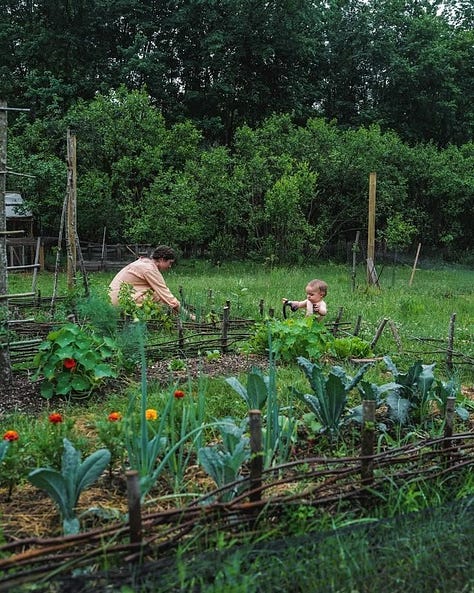
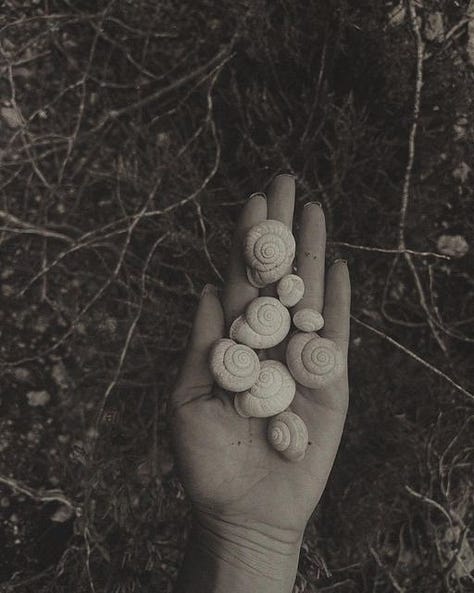
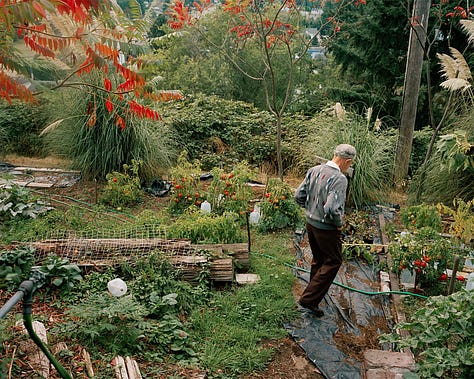
The Rhythm of Resilience: Stabilize & Expand
Resilience isn’t a trait. It’s a rhythm. And we can practice it.
Like breath—like the tide—it pulses between stabilization and expansion.
For years, I saw my need for rest after big efforts as a frustrating setback. After a time of putting myself out there, engaging deeply in my work, or stretching into new territory, I would crave solitude and stillness. And if I didn’t give that to myself, my body would force it—through exhaustion, illness, or a resurgence of chronic pain.
But what if this wasn’t regression? What if it wasn’t contraction?
What if it was stabilization?
Reframing this cycle from “expansion and contraction” to “stabilization and expansion” changed everything for me. All living systems move in these waves—growing, integrating, recalibrating, and then growing again.
This pattern isn’t just personal—it’s systemic. Movements, businesses, ecosystems, even cultural shifts all require phases of stabilization before the next wave of expansion. Recognizing this allows us to work with the natural rhythms of resilience, rather than against them.
This is a core framework we teach within EMUNAH, and you can access it here for free. We welcome you to download it, and if it resonates with you, share it with the people in your life that you’d like to grow this shared language with. As with all of our frameworks, we welcome you to make a nourishing cup of tea or cacao, make yourself comfortable, and dig in, take notes of your own wisdom and insights that arises, and deepen your own self-knowledge through the Good Questions we include at the end.
We’ll be sharing a deeply embodied experience of Stabilize & Expand at Steady in the Storm, an upcoming digital event and fundraiser for regeneration in LA after the wildfires. Click here to learn more and register.
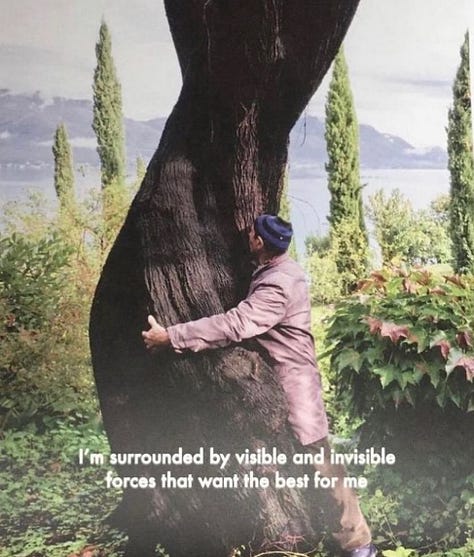

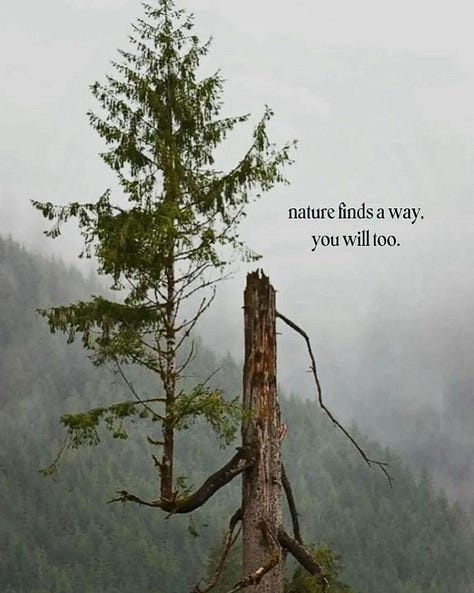
Somatic Resilience: Body as a living system.
Resilience begins in the body.
Somatic resilience is the ability to be with what is—to stay present and responsive rather than reactive, even in uncertainty. It is the foundation of all resilience because, without it, we remain trapped in cycles of avoidance, dissociation, or hyper-reactivity.
And in a world that conditions us to escape reality—to live in fantasies, distractions, or the curated dreams of others—this work is radical.
Somatic awareness is the practice of listening to what our bodies are telling us in real time. It is learning the language of tension, sensation, impulse, and release. The more we cultivate this awareness, the more we build resilience—not just for ourselves, but for our relationships, our communities, and the world.
At the heart of somatic resilience is our fascia—the connective tissue network that wraps through the entire body, much like mycelium in the soil. Fascia stores tension, regulates movement, and even holds memory. It shapes how we feel, how we move, and how we process experience.
Yet, much of the modern fitness and exercise paradigm approaches the body as if it were mechanical, treating movement as something to control rather than something to work with. This mindset often leads to injury, dysregulation, and ultimately undermines true resilience.
We see this all the time—people push through pain, override their body’s signals, or train in ways that reinforce stress rather than resolve it. Tension is mistaken for strength. Flexibility is mistaken for mobility. And healing is often left out of the equation entirely.
This is why somatic practices are essential for cultivating true resilience. They don’t just strengthen the body—they strengthen our capacity to be with, adapt, and respond to life.
Simple Somatic Practices for Resilience
Here are a few practices we use daily—both in our own lives and with our clients—to build somatic resilience:
Homing Breath
(A Nervous System Reset in 60 Seconds)
The Homing Breath is a simple, effective practice that helps bring your nervous system back to presence—whether you’re feeling anxious, overwhelmed, or disconnected.
Try this:
1. Inhale gently through your nose, feeling the breath expand into your ribs.
2. Exhale slowly through your mouth with your jaw as relaxed as possible, allowing yourself to gently sigh as you exhale, relaxing a little bit more each time.
3. As you exhale, bring your awareness inside your body, noticing what sensations, emotions, or thoughts are present—without needing them to be any different, trusting that they can shift.
4. Repeat for 5-6 slow breaths, noticing any shifts in your sense of home within yourself.
This practice helps tone the vagus nerve, steady the nervous system, and bring a sense of grounding even in uncertain moments.
Grounding in the Present Moment
(For When You Feel Panicked, Disconnected, or Scattered)
One of the simplest ways to stabilize your nervous system is to orient to the present moment through sensation.
Try this:
Feel your feet on the ground. Notice the pressure, weight, and support beneath you.
Press your hands against a surface—a desk, a tree, your own thighs. Feel the contact.
Name three things you can see, two things you can hear, and one thing you can physically feel.
This activates the sensory nervous system, helping to bring you out of overthinking and into embodied awareness.
Tension Release: Shake It Out
(For When You’re Holding Stress in Your Body)
Animals in the wild shake off stress after a threat has passed. Humans tend to hold onto it.
Try this:
Stand up and gently bounce on your heels. Let your arms hang loose.
Shake out your hands, wrists, shoulders, and legs. Let the movement be loose and easy.
If you feel comfortable, add sound—a sigh, a hum, or even a full-body exhale.
This helps discharge stored tension and brings a sense of flow back into your system.
Softening the Jaw, Releasing the Pelvic Floor
(For Chronic Stress Patterns)
Many of us hold stress in the jaw and pelvic floor without even realizing it. These areas are directly connected through the nervous system.
Try this:
• Unclench your jaw. Let your tongue rest gently at the roof of your mouth.
• Take a slow breath into your belly, then exhale with a soft sigh.
• As you exhale, imagine melting tension in your pelvic floor, just like you’re softening your jaw—allowing the whole base of your body to yield and release.
This simple shift can interrupt chronic tension patterns and signal safety to your nervous system.
Why Somatic Resilience Matters
Seth’s work on fascia, ambient trauma, the red light reflex, and nervous system resilience explores how our bodies hold stress—and how we can release it.
If you’ve ever felt tightness in your shoulders, an unshakeable sense of exhaustion, or a chronic injury that keeps resurfacing, it’s likely connected to nervous system load and stored tension patterns.
This is why movement should be designed not just for strength, but for awareness and adaptability.
Resilient movement is not about pushing through pain—it’s about building capacity. It’s about cultivating a body that can adapt to stress, rather than accumulate it.
This weekend, we’re hosting a free workshop, Your Body is a Temple, in which Seth will guide us through a multidimensional way of thinking about exercise design and movement—helping us train in a way that enhances strength, mobility, and resilience rather than reinforcing stress patterns.
Learn more and join us here!
Resilience begins here: in the body, in the nervous system, in the rhythm of stabilization and expansion.
Before we can grow, we need a steady foundation.
Before we push forward, we need to feel safe where we stand.
Without somatic resilience, we burn out before we even begin.
PS, We came across the work of Selin Nurgün in the weeks following Hurricane Helene. She lives in Asheville, and her handle on instagram is @somaresiliency. We immediately clicked. She has a lot of insight, and we recommend checking out her work.


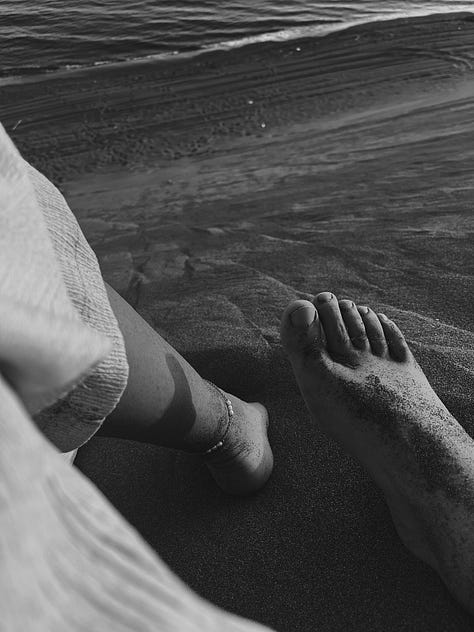
Spiritual Resilience: Orienting Toward the Greater Whole
Resilience is impossible without relationship to something beyond the self.
Throughout history, people have survived the unimaginable not just through reason or physical endurance, but through deep, mystical relationship with something greater. Every tradition has its own language for this—G-d, Spirit, mystery, consciousness, the Living World. There is wisdom in every lineage, and there is so much we can learn from one another.
For thousands of years, people have endured exile, oppression, war, and upheaval—not because they were the strongest or the most prepared, but because they had an inner orientation that carried them through.
Spiritual resilience is the ability to stay anchored in something greater than fear, confusion, or despair. It’s having a compass that holds steady even when everything around us is shifting. It’s less about certainty and much more about connection.
How We Cultivate Spiritual Resilience
In our own lives, we cultivate spiritual resilience through daily practices that ground us in relationship with the world, our ancestors, and the unseen forces that guide us. These small rituals help us remember that we are not alone.
Morning: Greeting the Living World
Every morning, we step outside and say hello to the world—to the sky, the trees, the garden, the birds. We place our bare feet on the earth, even if just for a moment, and physically connect with all that is greater than us.
Before we get caught up in emails, work, or stress, we orient first to life itself. We remind ourselves that we are part of something vast and interconnected. Even if you live in a city, you can greet the morning light, acknowledge the wind, or tend to a single plant.
Honoring the Ancestors
Inside, we tend to our ancestor altar—a space filled with photos, artifacts, and books that connect us to those who came before. Every day, we offer:
Bowls of water (inviting renewal and flow)
Fruit or herbs from the earth (offering nourishment and reciprocity)
Incense (inviting the flow of messages and blessings between us)
Candlelight (calling in their light, presence, and remembrance)
As we make these offerings, we call on their wisdom, blessings, and guidance—not as distant figures, but as an active part of our lives.
You don’t need to know the names of your ancestors to connect with them. You can honor the wisest parts of your lineage—those who lived in harmony with the land, those who held great love, those who dreamed of futures yet to come. They live within you.
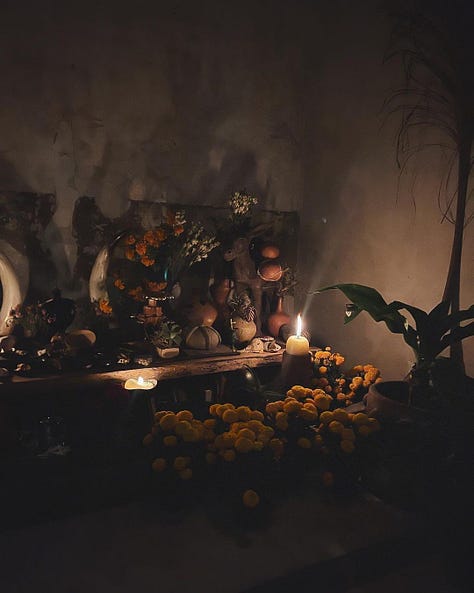
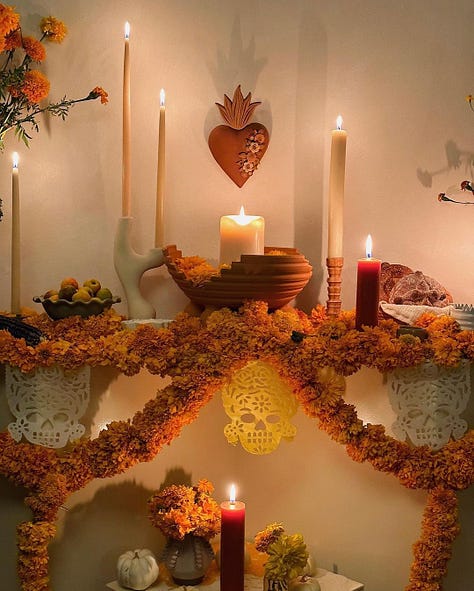
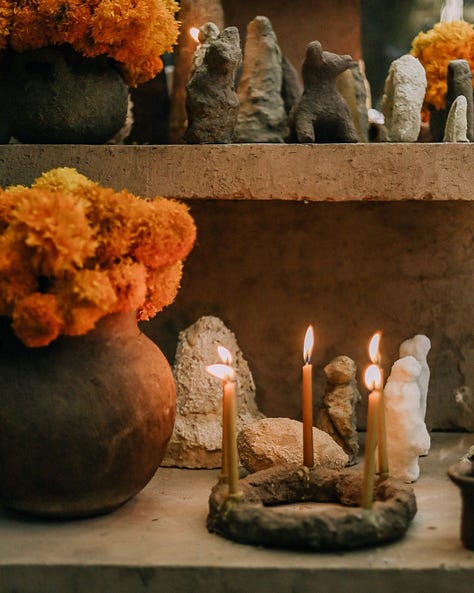
Night: Orienting in Six Directions
Sleep is absolutely essential for stabilization, because it’s when our mindbody regenerates, recovers from the stress and challenges of our waking life, and prepares us to meet tomorrow. But when we feel deeply unsafe, our bodies can try to protect us by keeping us from deep sleep. I’ve personally experienced this a lot in recent years with a lot of the collective trauma we’ve been moving through. I have a lot of tools I employ to reduce my cortisol and get better sleep (let me know if it would be helpful to write about those!), I find the spiritual practices just as important as the physical ones.
Before sleep, we take a moment to physically, spiritually, and psychologically orient ourselves—setting prayers and intentions for rest, healing, and guidance.
One of the practices we do is a prayer inspired by ancestral Hebrew angelic prayers of connection to six angels in six directions, calling in protection, wisdom, healing, and support for the night ahead.
We encourage everyone to create their own night practice—whether it’s a prayer, a moment of gratitude, or simply taking a few deep breaths while holding an intention for your dreams or rest. The transition into sleep is a portal—one that can be entered with presence.
Before We Eat: Connecting with the Web of Life
Before eating, before even feeding the dog, we pause and say a prayer. This isn’t about religious obligation—it’s about orienting ourselves to gratitude, reciprocity, and connection.
We reflect on:
The hands that grew this food
The land that nourished it
The life that it is sustaining in us
The intention we have to seek liberation for all beings
For us, this is about remembering our core values of Bodhicitta and Tikkun Olam. For you, it might be something entirely different. The practice itself is simple: before consuming anything, pause. Make it meaningful. Connect with the web of life. Let it be a moment of connection, not just a routine.
This relationship to something greater has always been essential for resilience. This was the very question that led the Dalai Lama to convene a gathering of Rabbis in Dharamsala in 1990, which was later documented in the book The Jew and the Lotus. This question was at the heart of this gathering:
Despite a deep and vital identification with the land they had been for so long exiled from, how have the Jewish people in diaspora maintained their identity and spiritual resilience through thousands of years of persecution?
The responses were varied because this tradition is full of questioning and looking at things from many different angles. As the saying goes, “two Jews, three opinions.” And the diversity of Jewish thought, practice, and tradition itself is undoubtedly a core factor in the resilience of the Jewish people.
Some spoke of ritual and prayer, others of study and dialogue, others of community and tradition. But one theme ran through all of it:
Resilience is not about holding onto fixed beliefs—it’s about staying in relationship.
This is the concept of Emunah.
And Emunah is a concept that has always resonated particularly strongly with us, so much so that it is the name of the digital home where we welcome our clients and community to study, practice, and connect as we all shape our lives and futures together.
What is Emunah?
Emunah is a Hebrew word that describes a deeply trusting relationship with that which is greater than us. It transcends mere belief or faith—it is a conviction, an embodied way of being rooted in unshakable trust in life’s unfolding.
Emunah is not the kind of faith that ignores reality. It is the kind of faith that includes reality—that acknowledges suffering, uncertainty, and injustice while still holding trust in the greater whole. It is not about bypassing discomfort. It is about standing in the tension of what is, while staying committed to relationship with the greater field of wholeness that we belong to.
And yes, it’s such a central idea in our lives that we named the platform we do so much of our work through, EMUNAH. You can explore it here.
Why We Created EMUNAH
EMUNAH is a space for wholeness.
It is the synthesis of all the dimensions of resilience—somatic, systemic, and spiritual—woven together through our work, our lived experience, and the relationships we cultivate.
It is a space where:
Seth’s work in strength, movement, trauma-informed embodiment, and regenerative fitness meets
My work in living systems, regenerative design, and cultural transformation, and
The wisdom and lived experiences of our clients, collaborators, and community members enrich and expand the conversation.
We built EMUNAH because we weren’t finding spaces that felt whole—where all of who we are could show up. We saw spiritual spaces that ignored systemic realities, personal development spaces that neglected collective responsibility, and movement spaces that failed to acknowledge the deeper layers of nervous system intelligence. But in reality, none of these dimensions exist in isolation.
EMUNAH is a space where all of this comes together. It’s not just about learning—it’s about integration. It’s about creating a place where we and everyone we are in relationship with can bring our full selves, our whole spectrum of experience, and our unique synthesis of wisdom and practice.
Everyone’s Spirituality is Complex
One of the deepest lessons we learned in our two-year training in interspiritual seminary is just how complex, personal, and layered spirituality truly is.
We are all a unique blend of ancestry, choice, initiation, and personal synthesis. No two people walk the exact same path, and no one should feel like they have to fit into a rigid structure of belief to engage in meaningful practice.
Your lineage, your lived experience, and your discernment all matter.
Some people arrive at their spiritual identity through lineage—deeply rooted in inherited traditions. Some arrive through choice, drawn to paths they weren’t born into but that call them. Some come through initiation—life-altering experiences, rites of passage, or moments of undeniable transformation. And for many of us, it’s all of the above—an ongoing process of weaving together what is most true and resonant.
We deeply believe that:
Spirituality is not one-size-fits-all—it is deeply personal and relational.
Skepticism and longing can coexist—you don’t have to have everything figured out.
You should be able to bring your whole self to spiritual spaces—no need to perform.
If Substack is the coffeeshop buzzing with brilliant people talking about important things, EMUNAH is the digital home we invite you to come to once we get to know each other a litttle better– a space designed for depth, connection, and real relationship.
A place where you can:
Lay down whatever heaviness you’re carrying and take a breath.
Study something meaningful, whether for five minutes or an hour.
Move your body, not just for exercise, but for presence and integration.
Listen to a meditation that actually shifts your state, rather than just checking a mindfulness box.
Engage in meaningful dialogue—not just about ideas, but about lived experience.
This is a space where resilience is not compartmentalized. It’s not about choosing between the body, the mind, the spirit, or the world—it’s about engaging all of them as an interconnected whole.
Why Emunah Matters for Resilience
In times of collapse and transformation, we need more than just strategies—we need a deeper orientation to life itself.
Emunah is an essential quality for spiritual, somatic, and systemic resilience, though you may call it something else. A deeply trusting, dynamic relationship with a larger form of consciousness is essential not only to survive immense challenge but also to have the inner strength to shape a life and a future you actually want to live in.
That’s what we cultivate.
That’s what we’re here for.
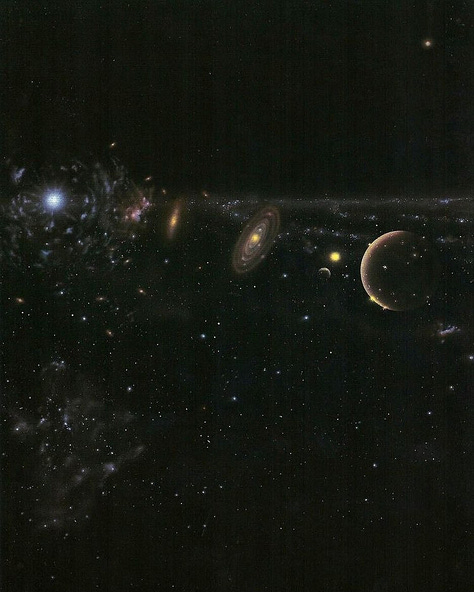

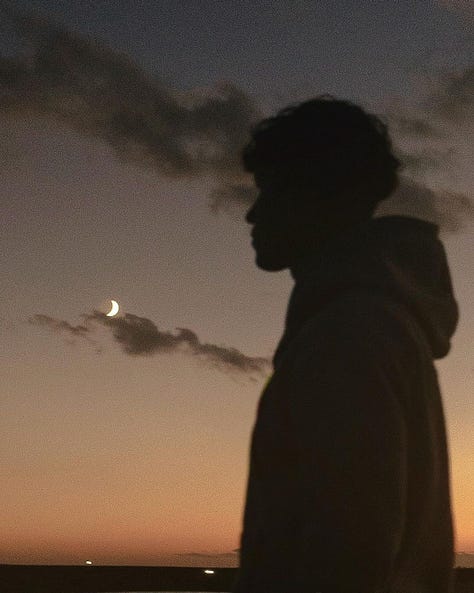
Systemic Resilience: Toward Regenerative Cultures
Resilience is always relational and contextual.
It is not something anyone can cultivate alone.
Too often, movements for systemic change mimic the urgency and extraction of the very systems they seek to dismantle—burning out the people driving them. But true transformation follows the same rhythms as living systems—stabilization and expansion, reciprocity, and regeneration.
If we want systems that support life, they must be designed in alignment with living systems.
What Does Systemic Resilience Look Like?
At every scale—from the body to the bioregion to the global economy—regenerative resilience emerges through:
Economic Resilience: Moving from extractive economies to regenerative, circular, wellbeing economies through mutual aid, cooperative ownership, expanded metrics of value and guaranteed income.
Ecological Resilience: Designing food, water, and energy systems that regenerate land, build biodiversity, and reduce dependency on centralized, fragile supply chains.
Social Resilience: Creating communities that prioritize care, interdependence, and adaptability rather than isolation and competition.
Political & Cultural Resilience: Shifting from top-down control toward decentralized, community-driven governance and decision-making.
Resilient systems cannot prevent disruption, however, they adapt and transform in response to it. And when designed well, they don’t just survive shocks—they become stronger through them. A valuable word to include in your vernacular for this is antifragile.
Resilience at the Scale of Place: Bioregionalism & Localized Networks
Systemic resilience is most effective when it is rooted in place.
Bioregionalism recognizes that solutions for resilience cannot be one-size-fits-all. Instead of centralized control, it focuses on place-based adaptation—meaning that each community builds resilience in ways that align with its land, culture, and resources.
Some examples of systemic resilience emerging at the bioregional / community scale:
Transition Towns: Local movements building resilience through decentralized energy, regenerative food systems, and skill-sharing.
Mutual Aid Networks: Grassroots systems of care that bypass bureaucracy and meet real needs in real time.
Worker & Land Cooperatives: Replacing extractive business models with structures that distribute ownership and decision-making.
Restorative & Transformative Justice: Moving beyond carceral systems and punitive models toward justice that heals rather than harms.
Practicing Systemic Resilience in Everyday Life
Systemic resilience is not just about large-scale movements, it requires that we organize our daily lives in ways that make us less dependent on fragile systems.
Growing and sourcing food locally rather than relying entirely on industrial supply chains.
Strengthening local economies by supporting small businesses and cooperative models.
Investing in relationships and skill-sharing rather than relying on institutions for all needs.
Organizing within communities to create safety nets outside of failing social systems.
The first step? Getting to know your neighbors. It can feel hard in today’s culture, and we all need discernment—but you might be pleasantly surprised.
Every act of mutualism, every investment in regenerative systems, every effort to decentralize power and resources strengthens systemic resilience.
Resilience is never built in isolation.
It emerges in relationship—with our bodies, our communities, and the larger systems we shape and are shaped by. It grows when we commit to practices that sustain us, when we design for regeneration rather than depletion, and when we gather in spaces that support deep connection and learning.
This is why we created EMUNAH.
Not as another course that gathers dust in your email inbox, or another stack of resources that you consume alone. But as a living, breathing ecosystem—a space where we can learn, practice, and grow resilience together.
For years, we wrestled with how to structure our offerings in a way that truly reflected our values of accessibility, depth, and interconnection. We’re still iterating, and will be learning and adapting forever. However, after much reflection, we’ve come to clarity about creating a community level membership that makes everything we’ve created much more accessible than the usual route (having a 1-1 client relationship with one of us). We’ve also streamlined some key things as it relates to Substack:
Your paid subscription on Substack and the community membership in the EMUNAH ecosystem now offer the same benefits—giving you multiple pathways to get started with us. Whether you join through
, , or directly through EMUNAH, you’ll have access to everything we offer to support your resilience journey. If you’re already a paid subscriber, we’ll be DMing you with details to access all of your benefits shortly.What’s Included in the EMUNAH Community Membership
📚 The Practical Wisdom Framework Library: Actionable frameworks integrating psychology, somatics, and systems thinking. Click here to check out the one’s we’ve made available to you for free.
🧿 The Embodied Visualization Meditation Library: Guided practices to help you stabilize, expand, and reconnect with your body’s intelligence.
🌊 Find Your Flow Library: A collection of 30 hour-long EMUNAH Flow sessions, blending movement, meditation, and journaling for personal ritual and deep integration.
🗓️ Live Member Events: Access to many of our live gatherings, including office hours, salons, and movement sessions.
🍃 The Connection Forum: A private space for deep, meaningful conversation and shared inquiry.
This membership is priced at $15/month, helping us cover the costs of running the platform while offering you resources that hold the depth of what we bring to our 1:1 client work—just not our personal time.
If this resonates, we invite you to join us.
Not just to access content—but to step into a shared field of resilience.
A space to steady yourself, strengthen your foundations, and expand into what’s next, together.
And of course, if you’d rather continue growing, learning, and connecting here on Substack or through our many free resources and events in EMUNAH, that’s completely welcome.
Nothing in our Substacks is behind a paywall now—all perks are in EMUNAH, so it’s just one simple easy threshold to cross, and we trust your discernment on whether and when it’s right for you.







Thank you for your intensional, compassionate and honest sharing. Your practices resonate with mine and inspire me to continue to expand and stabilize. In response to “I have a lot of tools I employ to reduce my cortisol and get better sleep (let me know if it would be helpful to write about those!)”….. I am very interested in hearing more when you are present with sharing and have the capacity to do so. ~ mahalo nui loa 🌺🕊️
So much makes sense now :) a coming together of so many strands that seemed disparate thank you for that!